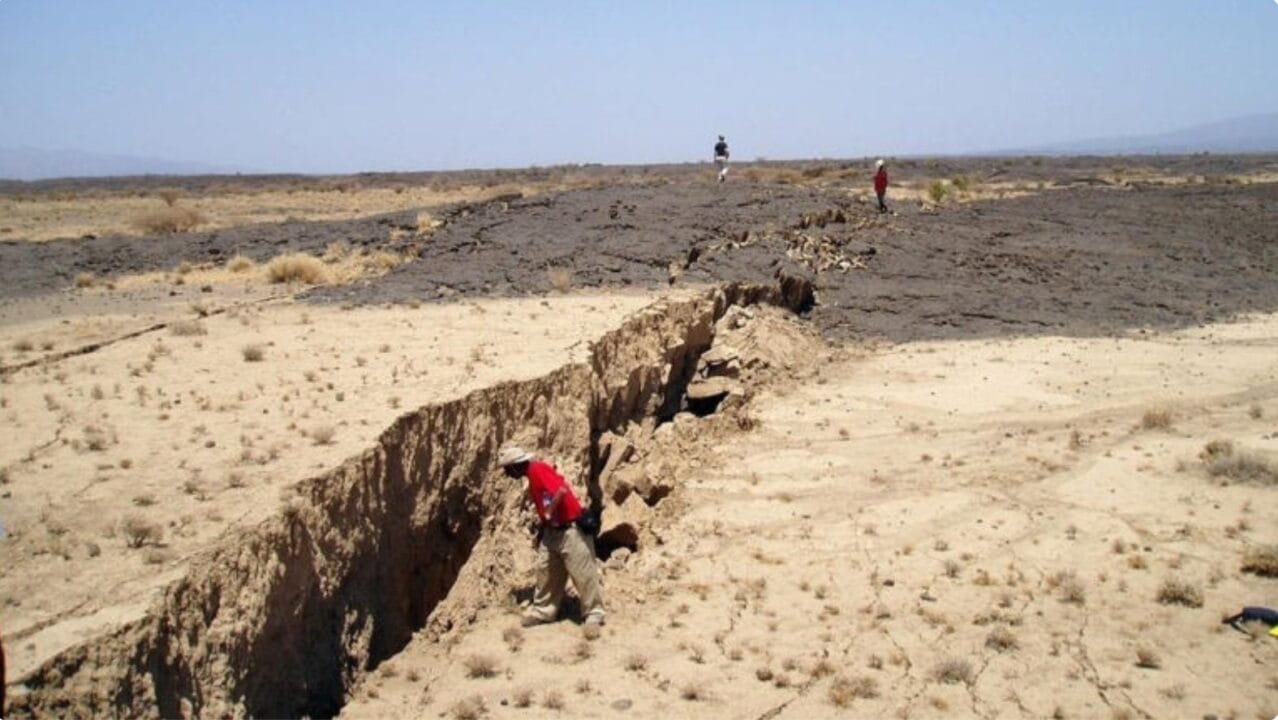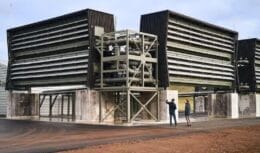
A rift is opening in Africa and a new ocean could emerge within millions of years. Crack can now be seen with the naked eye while geologists have been studying it since the 80s.
A large rift is gradually dividing the African continent, and scientists predict that this will form a new ocean, although it will only be many years from now. In 2018, the lands of Kenya were shaken by a Homeric geological event. A huge crack measuring 56 km was formed, involving a highway that connects Nairobi to Narok.
The rift in Africa, which could form a new ocean, continues to widen every day and scientists believe it will not stop anytime soon. This phenomenon called East Africa Rift (East African Rift in free translation) opened the way for scientists to make incredible discoveries: a possible new ocean and the division of the continent in two.
Such phenomena, despite being super slow and gradual compared to human life, are essential for the development of the planet and it is through such splits that planet Earth was shaped over time. This influences the climate, topography and even evolution on planet Earth.
Rift in Africa already extends for around 3 thousand km
The rift, which could generate a new ocean, currently extends approximately 3 km from the Gulf of Aden to Zumbabué. Since 2018, an article by the Geological Society warned of the division of the continent in two, which would generate a new ocean on Earth. There are other researchers who agree, as in a study published in the Daily Mail.

In this publication, in HAL Open Science, the responsible team analyzes the evolution of the crack and also calculates possible consequences. Furthermore, they also relate the function of magma and plate movement to the expansion of the rift in Africa. However, this process can take around tens of millions of years. The fact is, it's possible that humanity won't even be on the planet when the new ocean emerges.
Displacement in Africa can now be seen with the naked eye
According to the doctor in geology and professor in the department of geology at the Faculty of Science and Technology at Nairobi University Edwin Dindi, the separation is generated by movements caused by the friction of tectonic plates, a movement that marks the region called the Great Rift Valley or rift valley.
According to the professor, to the African newspaper The New Times in February last year, the plates are in a flow of movement, some move against each other along the fault zones and there is still a movement that causes more faults to form. form.
The process of removal is seen with greater detail into what geographers call East Africa, a region formed by the countries of Ethiopia, Uganda, Kenya and Tanzania. With the naked eye, it is already possible to observe the displacement of a small part of Africa, called by experts as the Somali Plate, from the part that corresponds to a greater extent.
The opening at the visible point of the earth and the separation of the continent itself occurs through a rise of magma jets from the interior of the planet, which generate a thinning of the earth's crust until resulting in the rupture and forming a new ocean.
Geologist has been warning of a new ocean since the late 80s
Geoscientist Cynthia Ebinger has been paying attention to the subject since the late 1980s. In 1998, she published her most influential article in scientific history in Nature, cited more than 900 times by her peers: Cenozoic magmatism throughout East Africa resulting from impact of a single plume (Cenozoic magmatism across East Africa resulting from the impact of a single hot spot, translated into Portuguese).
In the study, he analyzed the action of magma on the Ethiopian plateau with a model that can be expanded to the action of volcanism throughout East Africa, which has been occurring for 45 million years.
https://www.nature.com/articles/27417













